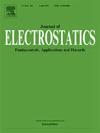单片OEW芯片中液滴分裂的研究
IF 2.1
4区 工程技术
Q3 ENGINEERING, ELECTRICAL & ELECTRONIC
引用次数: 0
摘要
精确的液滴操作是数字微流体的基础,然而传统的电润湿技术受到固定电极几何形状的限制,限制了它们的适应性。光电润湿(OEW)通过光致虚拟电极提供了一种可重构的解决方案,但实现可控的液滴分裂仍然是一个关键挑战。在这里,我们提出了一个人工智能驱动的单片OEW平台,该平台可以自主生成光学虚拟电极,在4-20 μL的体积范围内的油环境中实现无辅助的液滴分裂。我们引入了一个无量纲参数Γ来优化劈裂液滴的劈裂性能,揭示了Γ与光学虚拟电极轴相对于液滴轴的横向位移之间的线性关系。此外,我们的研究表明,增加液滴体积需要更高的最小劈裂场强,而更大的介质粘度进一步提高了这个阈值。这些发现为优化基于oew的液滴操作建立了定量框架,提高了其可扩展、高精度微流体应用的潜力。本文章由计算机程序翻译,如有差异,请以英文原文为准。
Study on droplet splitting in single-plate OEW chips
Precise droplet manipulation is fundamental to digital microfluidics, yet traditional electrowetting techniques are constrained by fixed electrode geometries, limiting their adaptability. Optoelectrowetting (OEW) offers a reconfigurable solution through light-induced virtual electrodes, but achieving controlled droplet splitting remains a key challenge. Here, we present an AI-driven single-plate OEW platform that autonomously generates optical virtual electrodes, enabling unassisted droplet splitting in an oil environment across a volume range of 4–20 μL. We introduce a dimensionless parameter to optimize droplet splitting performance of split droplets, revealing a linear relationship between and the lateral displacement of the optical virtual electrode axis relative to the droplet axis. Additionally, our study demonstrates that increasing droplet volume necessitates a higher minimum splitting field strength, while greater medium viscosity further elevates this threshold. These findings establish a quantitative framework for optimizing OEW-based droplet manipulation, advancing its potential for scalable, high-precision microfluidic applications.
求助全文
通过发布文献求助,成功后即可免费获取论文全文。
去求助
来源期刊

Journal of Electrostatics
工程技术-工程:电子与电气
CiteScore
4.00
自引率
11.10%
发文量
81
审稿时长
49 days
期刊介绍:
The Journal of Electrostatics is the leading forum for publishing research findings that advance knowledge in the field of electrostatics. We invite submissions in the following areas:
Electrostatic charge separation processes.
Electrostatic manipulation of particles, droplets, and biological cells.
Electrostatically driven or controlled fluid flow.
Electrostatics in the gas phase.
 求助内容:
求助内容: 应助结果提醒方式:
应助结果提醒方式:


